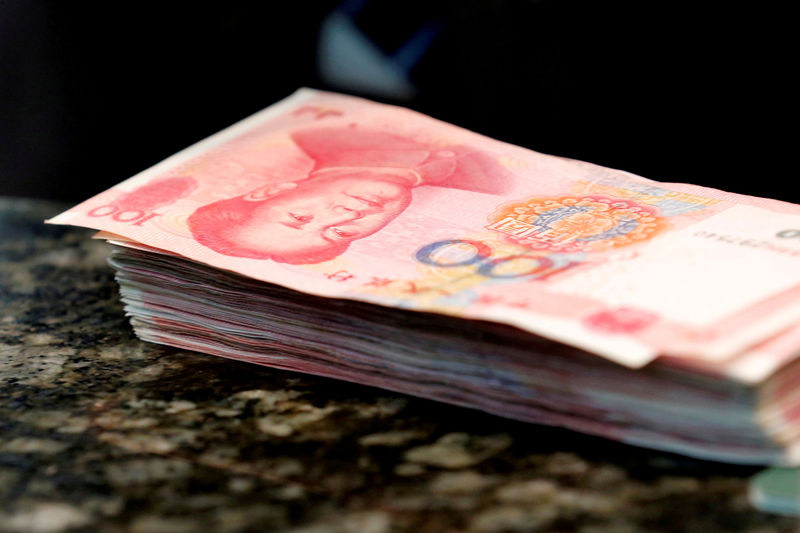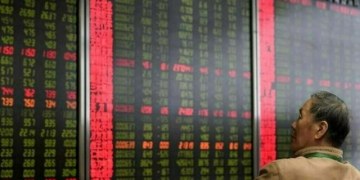 © Reuters. FILE PHOTO: Chinese 100 yuan banknotes are seen on a counter of a branch of a commercial bank in Beijing
© Reuters. FILE PHOTO: Chinese 100 yuan banknotes are seen on a counter of a branch of a commercial bank in BeijingBEIJING (Reuters) – Chinese banks extended 1.84 trillion yuan ($274.91 billion) in net new yuan loans in June, up considerably from the previous month and beating analysts’ expectations, as policymakers step up support for the economy.
Faced with a slowdown in domestic demand and the potential fallout from a trade war with the United States, Chinese policymakers have recently boosted policy support and softened their stance on deleveraging.
Analysts polled by Reuters had predicted new June yuan loans of 1.6 trillion yuan, significantly higher than May’s 1.15 trillion yuan. China’s banks extended a record 13.53 trillion yuan in new loans last year.
Broad M2 money supply grew 8.0 percent in June from a year earlier, central bank data showed on Friday, missing forecasts for an expansion of 8.3 percent and compared with 8.3 percent in May.
June’s M2 growth was the lowest since at least January 1996, when Reuters data on the series began.
The People’s Bank of China has said a slowdown in M2 growth could be a “new normal” due to official deleveraging efforts in the financial system.
Outstanding yuan loans in June grew 12.7 percent from a year earlier, faster than an expected 12.5 percent and almost the same as May’s 12.6 percent rise.
Household loans, mostly mortgages, rose to 707.3 billion yuan in June from 614.3 billion yuan in May, according to the central bank’s data.
Household loans accounted for 38.4 percent of total new loans in June, versus 53.4 percent in May.
Corporate loans rose to 981.9 billion yuan in June from 525.5 billion yuan a month earlier.
FEELING THE PINCH
The world’s second-largest economy has already felt the pinch from a multi-year campaign to reduce debt risks, especially in the financial system, that has driven up corporate borrowing costs.
A recent Reuters poll showed China’s gross domestic product growth was expected to ease marginally to 6.7 percent in the second quarter from a year earlier, versus the 6.8 percent seen in the previous three quarters.
Second quarter GDP data will be released on Monday.
Last month, China’s central bank announced its third reserve requirement ratio cut this year, releasing 700 billion yuan in liquidity, in an effort to accelerate the pace of debt-for-equity swaps and spur lending to smaller firms.
China’s financial regulator has told banks to “significantly cut” lending rates for small firms in the third quarter in comparison with the first quarter, two sources with direct knowledge of the matter told Reuters on Monday.
China’s total social financing (TSF), a broad measure of credit and liquidity in the economy, rose sharply to 1.18 trillion yuan ($176.30 billion) in June from 760.8 billion yuan in May, central bank data showed.
TSF includes off-balance sheet forms of financing that exist outside the conventional bank lending system, such as initial public offerings, loans from trust companies and bond sales.
That can provide hints of activity in China’s vast and unregulated shadow banking sector, which authorities have also been targeting in their campaign to reduce systemic risks.
Source: Investing.com





























